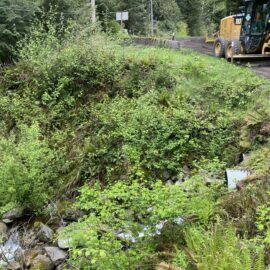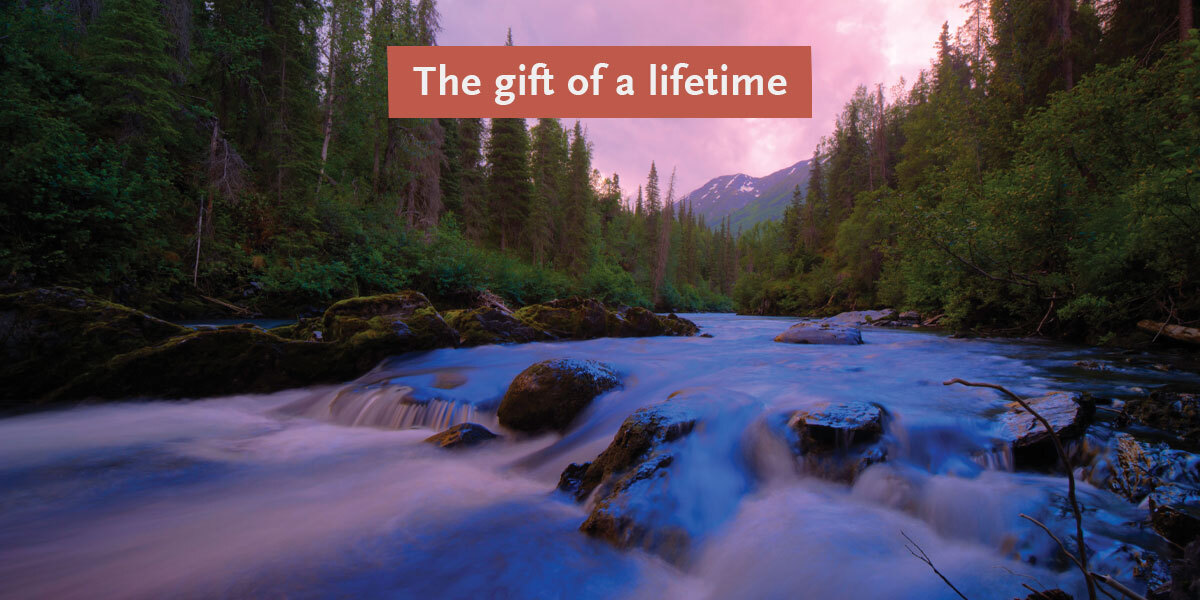With a major U.S. Fish & Wildlife Service award, federal infrastructure funds begin flowing to Pacific Northwest salmon strongholds.
Within months, the first flows of federal infrastructure bill money will reach Pacific Northwest salmon streams.
On April 11, the U.S. Fish & Wildlife Service announced awards of $38 million from its National Fish Passage Program for projects addressing fish barriers in 23 states and Puerto Rico. The 2022 funding represents round one of the five-year, $200 million infrastructure funding.
Seven of the 40 funded projects directly benefit Pacific Northwest salmon strongholds in Oregon and Washington. Three are projects on tributaries of the Sol Duc, a key producer of Chinook, coho, and steelhead in the larger Quillayute River basin.
The Sol Duc projects, which received awards totaling over $1.5 million, were secured through Wild Salmon Center’s Cold Water Connection campaign with the Coast Salmon Partnership and Trout Unlimited.

“This summer, work will be underway to free up critical spawning and rearing habitat for wild salmon in many of the watersheds we care about,” says WSC Salmon Habitat Specialist Betsy Krier. “We’re proud to be playing a part in making that happen.”
“This summer, work will be underway to free up critical spawning and rearing habitat for wild salmon. We’re proud to be playing a part in making that happen.”
Betsy Krier, WSC Salmon Habitat Specialist
The Cold Water Connection campaign was created to help unlock federal dollars for a shovel-ready pipeline of high-impact fish barrier projects in coastal Washington.
Last summer, our partnership helped coastal Jefferson County secure $1.8 million in federal transportation funding for a Hoh River culvert correction. USFWS’s new award shows that our effort is continuing to pay big dividends.

According to WSC Government Affairs Director Jess Helsley, this could be the first of several rounds of infrastructure bill funding for fish barrier projects in Oregon and Washington.
“USFWS is just the first agency out of the gate,” Helsley says. “The federal infrastructure bill contains multiple pots of money for culvert removal. Our goal is to assist Tribal and local communities in accessing these new funding streams to knock out as many projects as possible over the next five years.”
More than 4,300 fish barriers dot the Washington Coast, a staggering number that can make it hard for Tribal and county planning agencies to identify the most critical to address.
According to Mara Zimmerman, executive director of the Coast Salmon Partnership, the CWCC team has done the groundwork to narrow that list down to the most important project opportunities for both people and wild fish.

The team adds further value for resource-strapped local agencies by leveraging private donations to build out the kind of conceptual design plans that federal agencies often want to see when making awards.
“We have built the foundation to accelerate smart salmon recovery funding for the Washington Coast,” says Zimmerman. “Our partnership model was designed to meet opportunities exactly like this once-in-a-generation federal infrastructure investment.”
Poorly designed or degraded fish barriers can prevent juvenile salmonids from accessing critical cold water habitat and can block adult fish from reaching spawning grounds.
But they can impede human communities as well, Zimmerman says, by flooding roads and washing out undersized culverts: hazards that impact towns and transportation routes. That makes addressing problematic fish barriers a critical part of upgrading America’s infrastructure system to meet the challenges of a more volatile climate.
“This is a win for Washington State,” says Zimmerman. “It’s further proof that the multiplier effect we’re going for is paying off for both people and fish.”
“Our partnership model was designed to meet opportunities exactly like this once-in-a-generation federal infrastructure investment.”
Mara Zimmerman, Coast Salmon Partnership Executive Director




